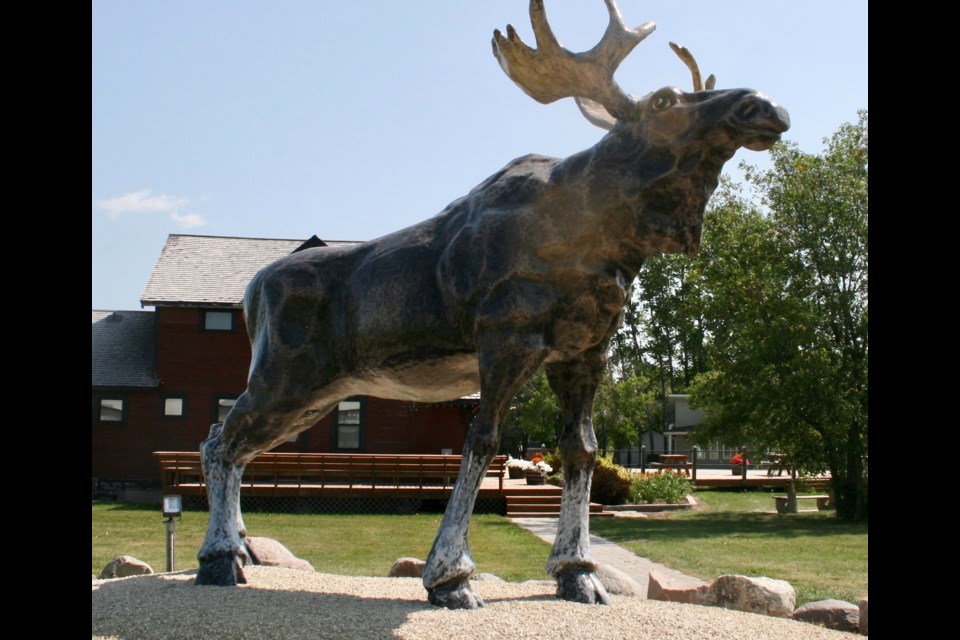The drive north of Gimli, Manitoba along Lake Winnipeg was pleasant, viewing fields of corn, canola, wheat, some sunflowers, and trees.
Once exclusively an Icelandic region, the Iceland flag still flies over a lot of farms around here.
The drive took us to the westerly community of Arborg where an Icelandic heritage village museum has been assembled from old farmsteads. The museum wasn’t open on this Sunday morning, but we walked around the village inspecting the cluster of homes, a grist mill, school, church, hall, barn, and oven building.
An information sign at one of the homes, a cottage style, told us the owner liked to have visitors in for coffee, entertaining up to 40 visitors a day.
Another fairly large house had 18 members in the first family, 12 in the second — nothing else to do on cold winter nights and all the children provided a helping hand on the farm.
One of the houses was shaped like a gambrel roofed barn.
On our way back a large sign reading Biggest Moose caught our attention. We had to drive 50 km to Riverton to see this moose. Is it bigger than Mac or that chrome Norwegian monster?
In Riverton, the sign clarified this was the biggest moose in Manitoba. The fine-looking creature was built by none other than Moose Jaw artist Grant McLaughlin, who has worked on a past restoration of Mac.
McLaughlin is currently working on the $430,000 restoration of the wildlife mural on the Enbridge storage tanks in Regina.
Our drive back to Gimli was frustrating at one point.
A bald eagle was dining on a fox at the roadside, not moving as we drove past. A ways down the road, we turned and came back.
The bald eagle was loathe to leave its prey. The car was across the road and the awesome bird was in my camera lens.
The giant wingspan filled the lens as the bird took off but my camera jammed leaving us without a spectacular photo.
On our trip home we drove up the east side of Lake Manitoba to Lundar, where a large marsh with trails has been set aside.
The walk is supposed to take up to three hours.
About 15 minutes into the walk two noisy crows announced my presence to the world. A moment later I realized why they were so extremely loud.
A young crow not yet flying well sat on a branch in the trail, hop/flying away. The walk continued for five minutes. The noisy crows followed, incessant in announcing my presence.
Realizing the raucous cawing would scare dead and living birds before I could ever see them, I turned back on the trail.
Ron Walter can be reached at [email protected]




